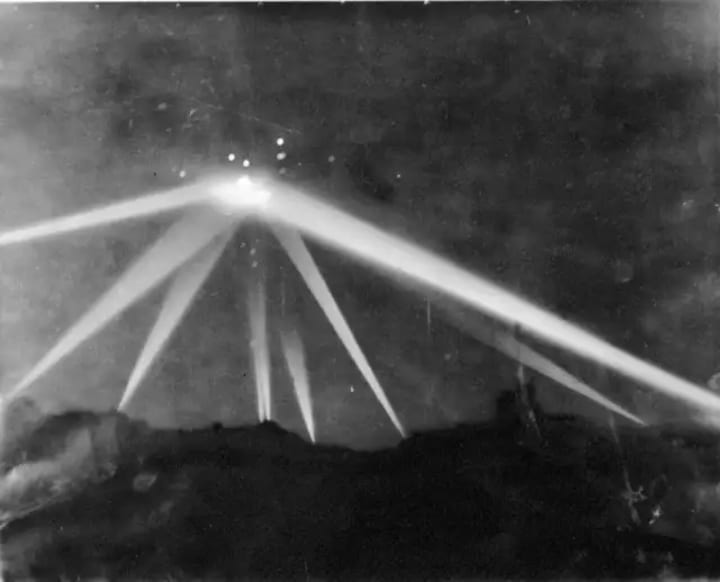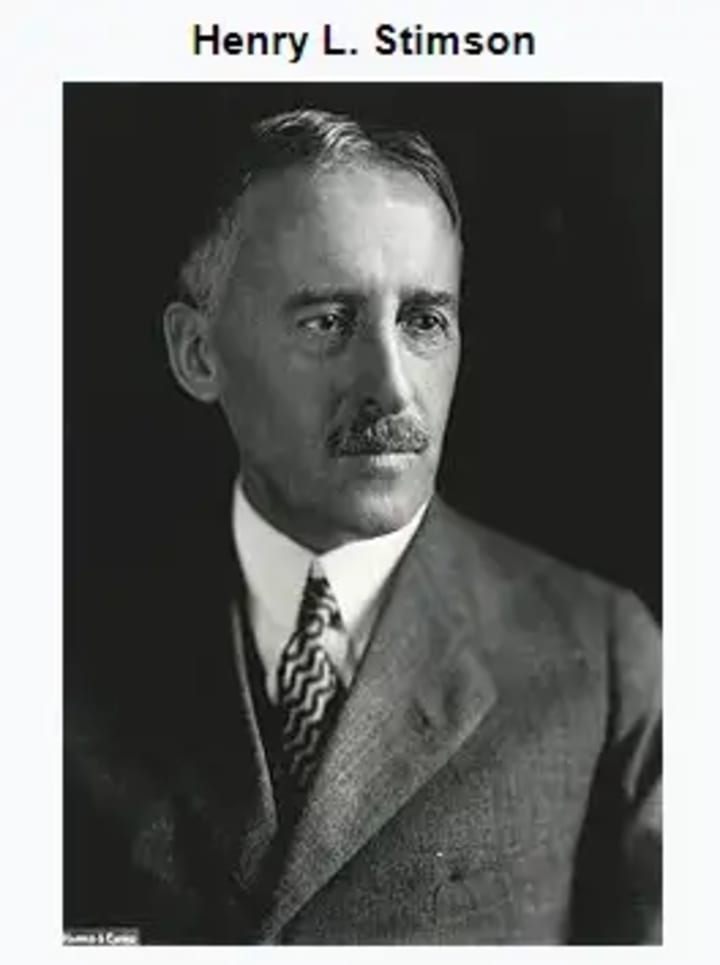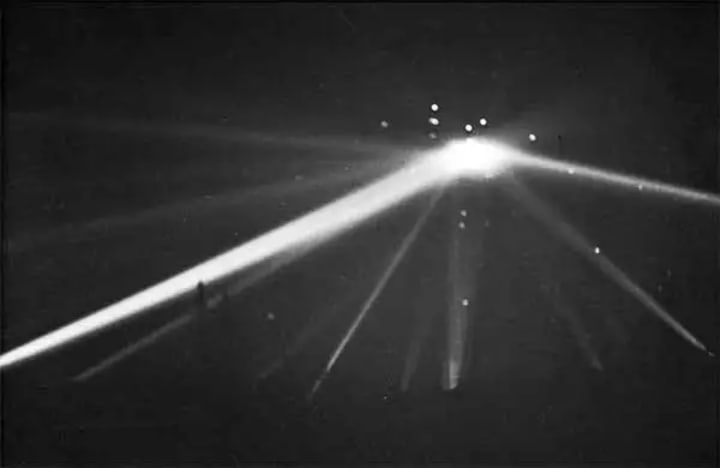
As the US declared war on Japan in December 1941, the first months of 1942 demanded a vast mobilization, efficiency, and precision in enhancing defenses.
Radars located Japanese warships and submarines near the big cities of the West Coast, and war analysts deemed an airstrike possible, especially at a time the Japanese aircraft carriers dominated the Pacific Ocean.
Drills were frequent as Americans expected an attack on the continental US by the Japanese airforce and navy.
No one knew when Japan would hit. With the population living under the constant threat of an airstrike or even a land invasion by Japanese forces, enhancing the military infrastructure and planning was critical.
The army installed new air defense artillery units in strategic positions to protect major cities and strengthen defenses, as the US military machine was regrouping, concentrated on a massive counter-attack on the European front.
Amid all this frenzy engulfing the globe eighty years ago, one of the most bizarre events of World War 2 marked the USA, a mystery with no explanation regarding what happened all this time ago.
What did the US army conceive as a threat during that night?

All Hell Breaks Loose

City of Los Angeles, February 25th, 1942
The incident occurred during the morning hours on February 25th, 1942, in Los Angeles.
Major cities all over the West Coast experienced blackouts, and air-raid sirens warned the population to take cover.
Radars had identified the threat, an unidentified aircraft moving into Los Angeles.
Civil defense alarms sounded as searchlights kept scanning the night sky for intruders.
A hail of anti-aircraft artillery firing broke out unexpectedly.
Both radars and the spotlights scanning the night sky spotted the threat, although these flying objects didn’t look like the typical fighter aircraft of the era.

Officers reported witnessing more targets since the sporadic firing spread over the city sky.
According to military personnel and civilians after the battle, some reported having spotted up to 200 unidentified flying objects!
However, reports were contradicting. Some witnesses claimed they spotted the flying objects the artillery was shelling, others saw nothing.
Furthermore, some reports suggested the objects they thought the flying objects were balloons, a theory that three years later became the official explanation.
The artillery shelling ceased when the perceived threat was no longer visible at 04:00 am, although the city remained under a blackout until the morning.
For more than an hour, anti-aircraft guns attacked unidentified objects in the sky but mostly concentrated their fire on one particular target. A flying object, moving slower than normal, which searchlights spotted and artillery immediately targetted.
By dawn, there was nothing but questions left for civilians who had lived this horrific experience.
The military could not explain what had happened and offered conflicting reports on the incident.

Media Coverage
CBS News
Radio station “CBS News” covered this story explicitly the following day:
The CBS reports suggested the airforce had launched fighters to intercept the objects invading the Los Angeles sky.
The initial investigation held by army officials after the end of WW2 asserted that at least one flying object (aircraft) was observed in the vicinity while also mentioning it could have been up to fifteen.
“Los Angeles Times” Coverage

The following day, the Los Angeles Times provided pictures of what seemed to be an object targeted by artillery fire.
Moreover, other newspapers reported various sightings of the targets getting hit and aircraft or objects crashing to the ground.
However, there was no formal report about any wreckage, and the official announcement by the Western Defence Command was that no wreckage was found and no bombs had been dropped.
However, the miscommunication between officials after the event seems to have added more confusion to the case.
William Franklin Knox (Secretary of the Navy) mentioned that the navy believed it was a false alarm, although this statement was in complete contrast to what Henry Stimon (Secretary of War) reckoned:
“As many as 15 planes may have been involved, flying at what is reported as varied and very slow speeds” — Henry Stimson, Secretary of War (Source)
The official report from the War Department Office to President Roosevelt follows:

While even the official report suggests fifteen planes were spotted, the investigation concentrated on one particular ship or object, the one the radars had also recorded.
After the first target vanished, another one was spotted at Long Beach. The new sighting initiated a second barrage of anti-aircraft artillery that shelled the object until it disappeared over the ocean.

The Official Report

In 1948, a formal investigation by professor William Goss assumed the unidentified objects over LA were nothing but the usual suspect in all UFO cases: weather balloons.
By removing part of the reports regarding various aircraft spotted, the balloon theory was acceptable, and in line with officers’ reports, which testified to having noticed a meteorological balloon.
According to this investigation, miscommunication was the reason for the anti-aircraft unit opening fire on a weather balloon launched a couple of minutes ago from the Hollywood area.
The investigation concluded that officials falsely raised the alert level. It also claimed that miscommunication between radar stations and ground command of LA generated unnecessary panic.
The radar readings that displayed a slow-moving flying object should have indicated that the object was not hostile.
While this report contains plenty of details, it still doesn’t justify what official records reported.
However, many of the reports on which the investigation based its hypothesis also mentioned witnessing or hearing of multiple aircraft flying above LA. Also, the investigation didn’t consider official reports of objects spotted in the area during the incident.
Why would the artillery fire 1400 rounds of anti-aircraft ammunition on a single target which looked like a weather balloon?
Seems impossible to realize how a weather balloon would remain undamaged from direct hits by the barrage of shells exploding right in its direction.

Conclusion

The mysterious Battle of Los Angeles baffled researchers, while no explanation seemed convincing.
Eighty years later, the blurred images from the newspaper of the day and the accounts of officials and civilians recorded are not that credible to give us a clear answer.
Three years later, Japan had already surrendered but denied any involvement after being questioned by US officials.
Another question emerges. Why would the US authorities question Japan if they considered the case closed?
The weather balloon theory is plausible but did not answer why there was no wreckage found or why the defense forces kept firing for two hours at these objects, but to no avail.
The investigation was a one-way procedure, ignoring the majority of reports that did not justify the outcome.
Who or what was the target that triggered the anti-air defense and the shelling that followed?
Theories vary, but eighty years is a long time, and since no new evidence emerged, the case was closed without a convincing explanation.

- Cover picture on Pixabay
Originally published at Medium (with my profile: "Ex Cathedra")
Also Read:
Like and Subscribe if you enjoyed the content!







Comments
There are no comments for this story
Be the first to respond and start the conversation.